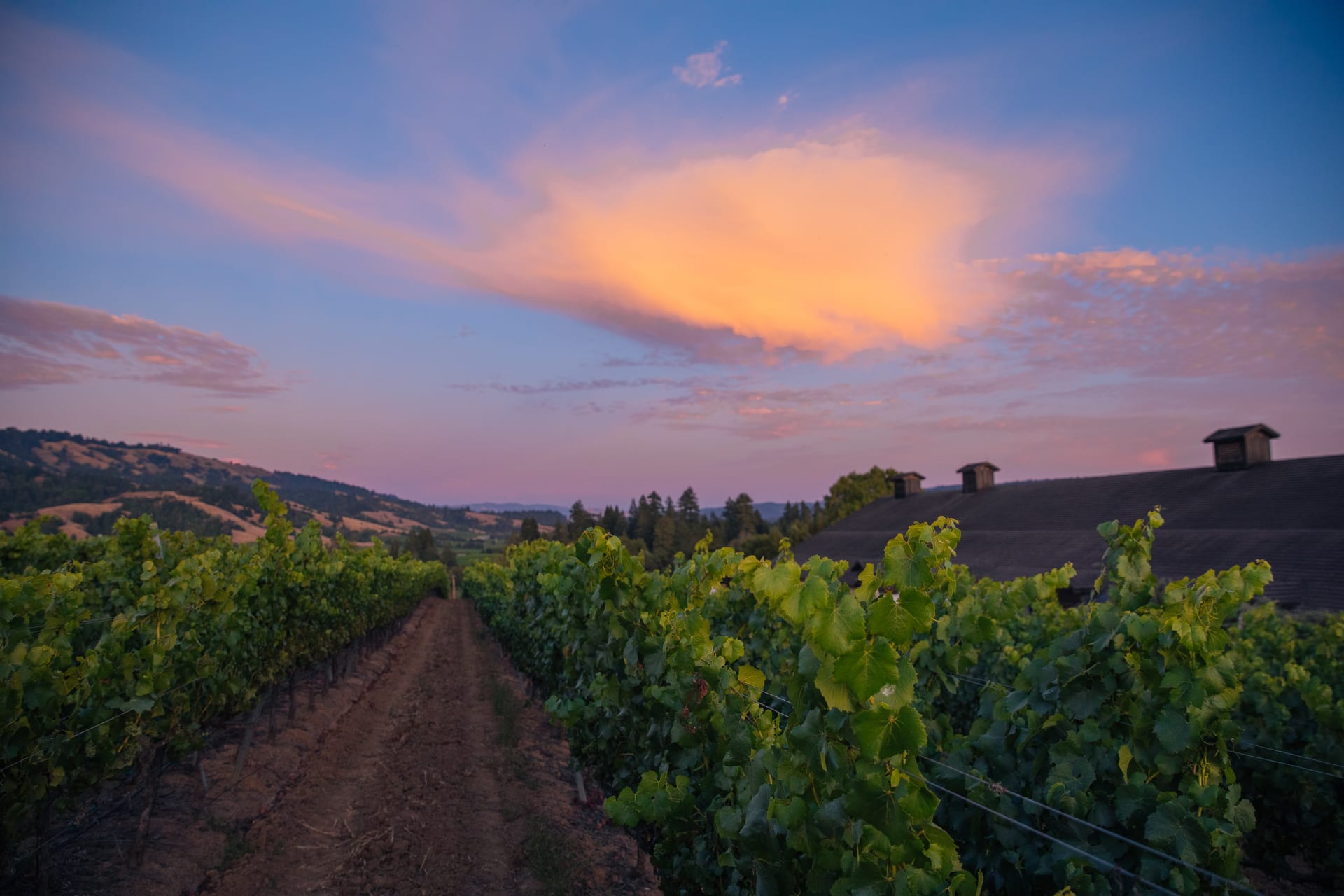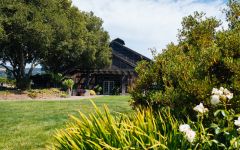Roederer Estate L'Ermitage Brut Rose 2003
-
Wine &
Spirits -
Wine
Enthusiast -
Wine
Spectator -
Robert
Parker


Product Details
Your Rating
Somm Note
Winemaker Notes
L'Ermitage Rosé brings complexity and smoothness to a higher level. The delicate salmon colors enhance the tiny bubbles and creamy mouthfeel. Notes of bread crust, baked apples and caramelized hazelnut create an elegant and complex wine. The wine is crisp with great acid on notes of quince jelly and anise.
Professional Ratings
-
Wine & Spirits
Racy, a term often used to describe Champagne, rarely applies to California sparkling wine. Roederer Estate's second release of L'Ermitage Rosé is one of the few exceptions-racy, as well as delicate, layered, savory and gently sweet. It's a compelling take on a clean sparkler from the California coast, with the feel of the cold ocean and something of the taste of the sea creating tension and motion in the wine. If I were to describe the color as the pink blush on a golden apple, I would only diminish it to a cliché. The color is as brilliant as the wine itself. This is a breakthrough wine for California, and perhaps the ultimate match for Dungeness crab. Don't miss it.
-
Wine Enthusiast
This is as fine a rosé sparkling wine as has ever been produced in California. Almost 50-50 Chardonnay and Pinot Noir, it has rich flavors of cherries, raspberries, vanilla, toast and creamy lees, in the style of Champagne, and is completely dry and very crisp in acidity. Fabulously drinkable now, it should develop well over the next 6–8 years.
-
Wine Spectator
Rich yet delicate in style, with a soft salmon color and graceful aromas of strawberry, peach and yeast. Flavors take on complexity, balancing crisp acidity with mature yet opulent raspberry, toasty vanilla and mineral flavors. Drink now through 2014.
-
Robert Parker's Wine Advocate
Pale salmon-pink in color, the 2003 L'Ermitage Brut Rosé, made with about 10 grams per liter dosage, opens with notes of toast, iodine and dried flowers with earthy, mushroomy fruit at the core. The medium-bodied palate is broody, savory and toasty in character. Disgorged in December of 2008, it seems closed off, and it may be time to drink up.
Other Vintages
2013-
Wilfred
Wong -
Wine &
Spirits -
Connoisseurs'
Guide -
James
Suckling -
Wine
Spectator -
Robert
Parker
-
Wine
Spectator -
Robert
Parker -
Wine &
Spirits -
Connoisseurs'
Guide -
James
Suckling
-
Wine &
Spirits -
Wine
Spectator -
Robert
Parker
-
Robert
Parker -
Wilfred
Wong -
Wine &
Spirits
-
Wine
Enthusiast -
Wilfred
Wong -
Robert
Parker -
Wine &
Spirits
-
Wine
Spectator






Founded in 1982, Roederer Estate is nestled in Mendocino County’s fog-shrouded, Anderson Valley. As the California property of Champagne Louis Roederer, Roederer Estate builds upon a centuries-old tradition of fine winemaking. Roederer's unique winemaking style is based on two elements: complete ownership of its vineyards and the addition of oak-aged reserve wines to each year's blend or cuvee to create complex, dry and harmonious sparkling wines.
The crisp, fresh and rich flavors of Roederer Estate sparkling wines reflect the cool Anderson Valley that is home to their family-owned estate's 600 acres of vineyards. This protected valley in Northern California provides the ideal ripening conditions for their 100% estate-grown Pinot Noir and Chardonnay grapes. The blending team is comprised of the winemakers from the California property as well as from Champagne Louis Roederer, ensuring that Roederer Estate remains the most French of the California sparklers.

What are the different types of sparkling rosé wine?
Rosé sparkling wines like Champagne, Prosecco, Cava, and others make a fun and festive alternative to regular bubbles—but don’t snub these as not as important as their clear counterparts. Rosé Champagnes (i.e., those coming from the Champagne region of France) are made in the same basic way as regular Champagne, from the same grapes and the same region. Most other regions where sparkling wine is produced, and where red grape varieties also grow, also make a rosé version.
How is sparkling rosé wine made?
There are two main methods to make rosé sparkling wine. Typically, either white wine is blended with red wine to make a rosé base wine, or only red grapes are used but spend a short period of time on their skins (maceration) to make rosé colored juice before pressing and fermentation. In either case the base wine goes through a second fermentation (the one that makes the bubbles) through any of the various sparkling wine making methods.
What gives rosé Champagne and sparkling wine their color and bubbles?
The bubbles in sparkling wine are formed when the base wine undergoes a secondary fermentation, which traps carbon dioxide inside the bottle or fermentation vessel. During this stage, the yeast cells can absorb some of the wine’s color but for the most part, the pink hue remains.
How do you serve rosé sparkling wine?
Treat rosé sparkling wine as you would treat any Champagne, Prosecco, Cava, and other sparkling wine of comparable quality. For storing in any long-term sense, these should be kept at cellar temperature, about 55F. For serving, cool to about 40F to 50F. As for drinking, the best glasses have a stem and a flute or tulip shape to allow the bead (bubbles) and beautiful rosé hue to show.
How long do rosé Champagne and sparkling wine last?
Most rosé versions of Prosecco, Champagne, Cava or others around the “$20 and under” price point are intended for early consumption. Those made using the traditional method with extended cellar time before release (e.g., Champagne or Crémant) can typically improve with age. If you are unsure, definitely consult a wine professional for guidance.

Reaching up California's coastline and into its valleys north of San Francisco, the North Coast AVA includes six counties: Marin, Solano, Napa, Sonoma, Mendocino and Lake. While Napa and Sonoma enjoy most of the glory, the rest produce no shortage of quality wines in an intriguing and diverse range of styles.
Climbing up the state's rugged coastline, the chilly Marin County, just above the City and most of Sonoma County, as well as Mendocino County on the far north end of the North Coast successfully grow cool-climate varieties like Pinot Noir, Chardonnay and in some spots, Riesling. Inland Lake County, on the other hand, is considerably warmer, and Cabernet Sauvignon, Zinfandel and Sauvignon Blanc produce some impressive wines with affordable price tags.
